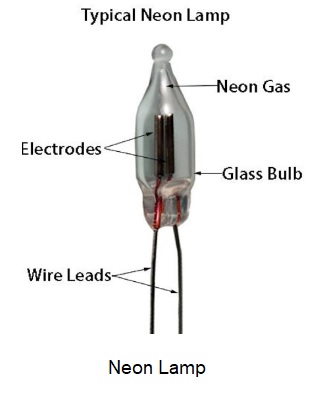Neon Lamp – Construction, Working, Advantages, Disadvantages and Applications:
Neon lamp is a cold cathode lamp and consists of a glass bulb filled with neon gas with a small percentage of helium. These lamps give orange pink coloured light.
Construction and Working Principle:
Electrodes are of pure iron and are spaced only few mm apart so that lamps can be made for voltages as low as 110 volts ac or 150 dc. For use on ac the electrodes are of equal size. On dc the gas glows near the negative electrode, therefore, negative electrode is made larger in size.
The efficiency of neon lamp lies between 15-40 lumens/watt. Owing to discharge of the gas between the electrodes in the form of an arc, it may cause the current drawn by the lamp to increase indefinitely. This is prevented by connecting a high resistance of few thousand ohms in series and mounting it in the cap.
The lamp of this type is of the size of an ordinary incandescent lamp. The power consumption is of the order of 5 watts.
Advantages of Neon Lamps:
- It is very less expensive.
- It will glow immediately.
- These lamps consume less electricity.
Disadvantages of Neon Lamps:
- Neon Lamp have low efficiency.
Applications of Neon Lamps:
Neon lamps are used as indicator lamps, night lamps, for determination of polarity of dc mains and in larger sizes as neon tubes for the purpose of advertising.
